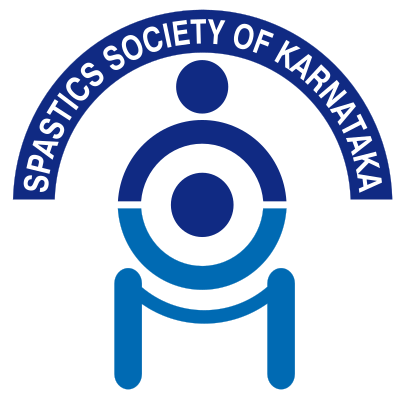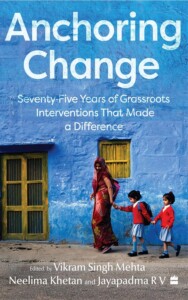Driven by the doctor’s prognosis about her daughter, Malini, who was affected by cerebral palsy, Mithu Alur trained as a special educator in England and returned to India with a sense of purpose and a recognition of possibilities. “What about the other Malinis?”, namely those who cannot avail of the same services was a recurring thought. And so, in a modest way, one that possibly could not have foretold that it would it spawn a major transformation, a small centre started, modelled on the Cheyne Centre in London. What began in 1972 in Mumbai with three students was a “second birth” for Ms. Alur – the Spastics Society of India (SSI), later renamed ADAPT (Able Disabled All People Together). The Spastics Societies set up in four cities (which have now all been renamed) acted as a major catalyst in training teachers, therapists and parents, and imparting the technical expertise required to provide a rounded and holistic education for children with cerebral palsy.
The term cerebral palsy coined by Dr. William Osler entered the lexicon as early as 1887, but the underlying condition was known even a few decades earlier thanks to the work of Dr.William John Little, who published a series of lectures on the “nature and treatment of deformities to the human frame”. Even so, one of the largest health organisations in the United States, the United Cerebral Palsy Association, was founded only in 1950. In Britain, The National Spastic Society, renamed Scope in 1994, was established in 1952.
In India, the critical push for setting up schools, founding associations, and pressuring government to take notice came from parents of children with cerebral palsy. Despite the size of the country, the other three pioneering spastics society schools – Kolkata, Delhi and Chennai – were linked, in one way or another, to the one in Mumbai.
Deeply affecting personal circumstances were the catalyst for creating the momentum and the environment for what became a professional and socially-conscious mission. And although the first steps were taken without governmental support, this would come quickly, and in the form of an invaluable asset when it comes to institution-building in large Indian cities – land. To some extent, it helped that most of the people who led the mission were socially well-connected but governments – both at the State and Central level – were sympathetic and supportive of the cause.
At that time, there were no government schools for the multiply disabled. There was also a lack of technical expertise in the knowledge and application of rehabilitative techniques in this area. In such an environment, there was possibly an underlying pragmatic consideration as well for ensuring the viability and success of non-governmental initiatives in this area.
The initial years had a twin focus – children and their parents. Children were provided rehabilitation services in the form of special education and therapy. There was also attention paid to extra-curricular activities, an attempt to impart as holistic an education as possible. One of the critical values of the four spastics societies was the parents only paid what they could afford, something that helped in the shaping of institutions that catered to a diverse set of families. It was recognised that parents needed to come to grips with the condition of their children, and its implications for the future. Getting them to understand the condition was a priority and empowering them to take charge of the situation was an absolute necessity. In time, this helped to create a pool of resource people in the community, some of those who were trained informally, and others that had completed courses in special education run by the four societies.
There was a recognition that formal education and the presence of a skilled multi-disciplinary team was critical towards going forward. In Mumbai and Kolkata, the presence of two British physiotherapists (Pamela Stretch and Tessa Hamlyn) helped in creating a measure of this. And while Ms. Alur, Ms. Kaul, Ms. Reena Sen (Kolkata) and Ms. Meenu Jalan (Delhi) went on to register and receive doctorates in England for their work in special education, it was essential to formally train staff in India. The first formal course, a Postgraduate Diploma in Special Education (Multiple Disabilities: Physical and Neurological) was set up by ADAPT in Mumbai in 1978. Similar courses were started at the spastics societies after their founding in Kolkata, Delhi and Chennai. Around a decade or so ago, they became two-year courses, a part of the B.Ed. programme, that has university recognition.
Another way the network expanded was through community-based rehabilitation (CBR) programmes. The Chennai centre and the Delhi Centre went a step further by including mental health in its CBR ambit. The expansion of their footprints – in terms of geography and the widening nature of their work – was a result of the expertise they had developed over the years.
The global effort to push for education for all as a fundamental right culminated in a gathering under the umbrella of UNESCO in 1994 in Salamanca, Spain, leading to the declaration that inclusion should be the rule when it comes to the education of children with disability.
For organisations that ran special schools, this idea implicitly contained the intimations of their own mortality, at least theoretically. At a practical level, the enormous challenges to implement a true and thoroughgoing inclusivity still remains, and so the special schools still retain an enormous relevance in the rehabilitation of the multiply disabled.
A year after Salamanca, India passed legislation called People With Disabilities (Equal Opportunities, Protection of Rights, and Full Participation) Act, 1995, which underlined that all children with disability should have access to free and adequate education. While this was another step forward, the Act became a catalyst of sorts for a larger movement. The growth of a distinct advocacy movement among, and for, people with disabilities got further entrenched in the language of rights.
The growth of the cross-disability movement and the increasing emphasis on advocacy as a tool for social and economic reform led the United Nationals General Assembly to adopt a Convention of the Rights of Persons with Disabilities, in December 2006. It stressed individual autonomy, non-discrimination and full and effective participation and inclusion in society. The Rights of Persons with Disabilities Act, 2006, a more comprehensive legislation, which expanded the definition of disability by including, among other categories, people with mental illness and autism, and providing for reservation in government and government-aided higher institutional educations and government jobs for those with benchmark disability, defined as at least 40 per cent of those disabilities recognized under the Act.
In India, the challenges for inclusive education are numerous and created by a number of issues such as inadequate teacher preparation, poor physical infrastructure, and inadequate financial resources. While there are many more children in mainstream schools today than before, there has been a parallel growth in the number of special schools, which are a sober reminder of how much remains to be done. But the important thing is that the spastics societies and the disability movement at large have begun to force a change in mindset, by advocating that inclusiveness is not something granted by benevolence or a sense of altruism, but a systemic problem that can and needs to be fixed. It is from such progressive ideas that real changes are ushered.
This blog is a summary of a chapter written by Rajul Padmanabhan in “Anchoring Change: Seventy five years of Grassroots Interventions that Made a Difference” edited by Vikram Singh Mehta, Neelima Khetan and Jayapadma RV, published by Harper Collins India. The book is a recipient of the GLF Honour Award 2023.
The chapter summary has been prepared by Jayapadma RV.












